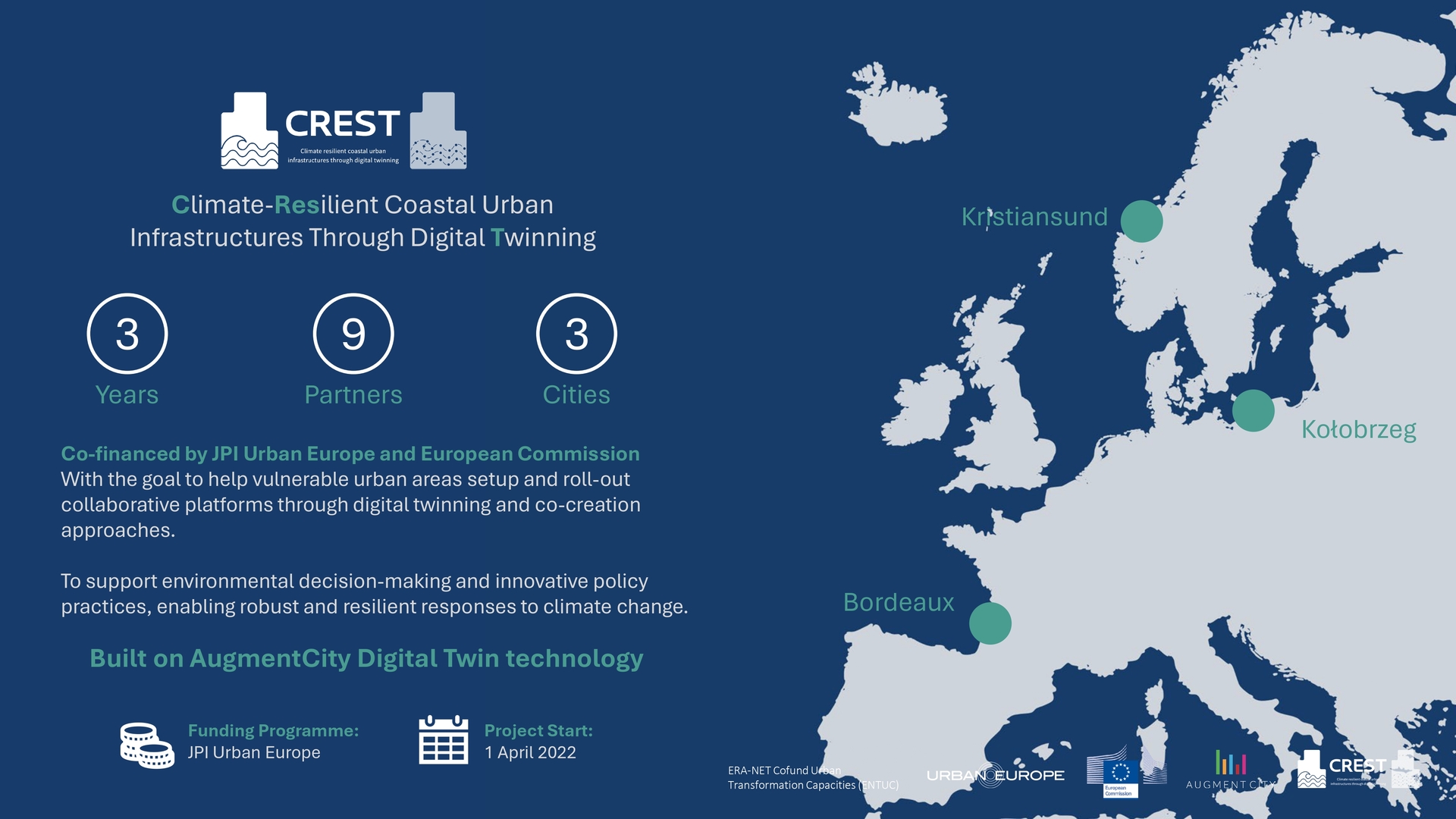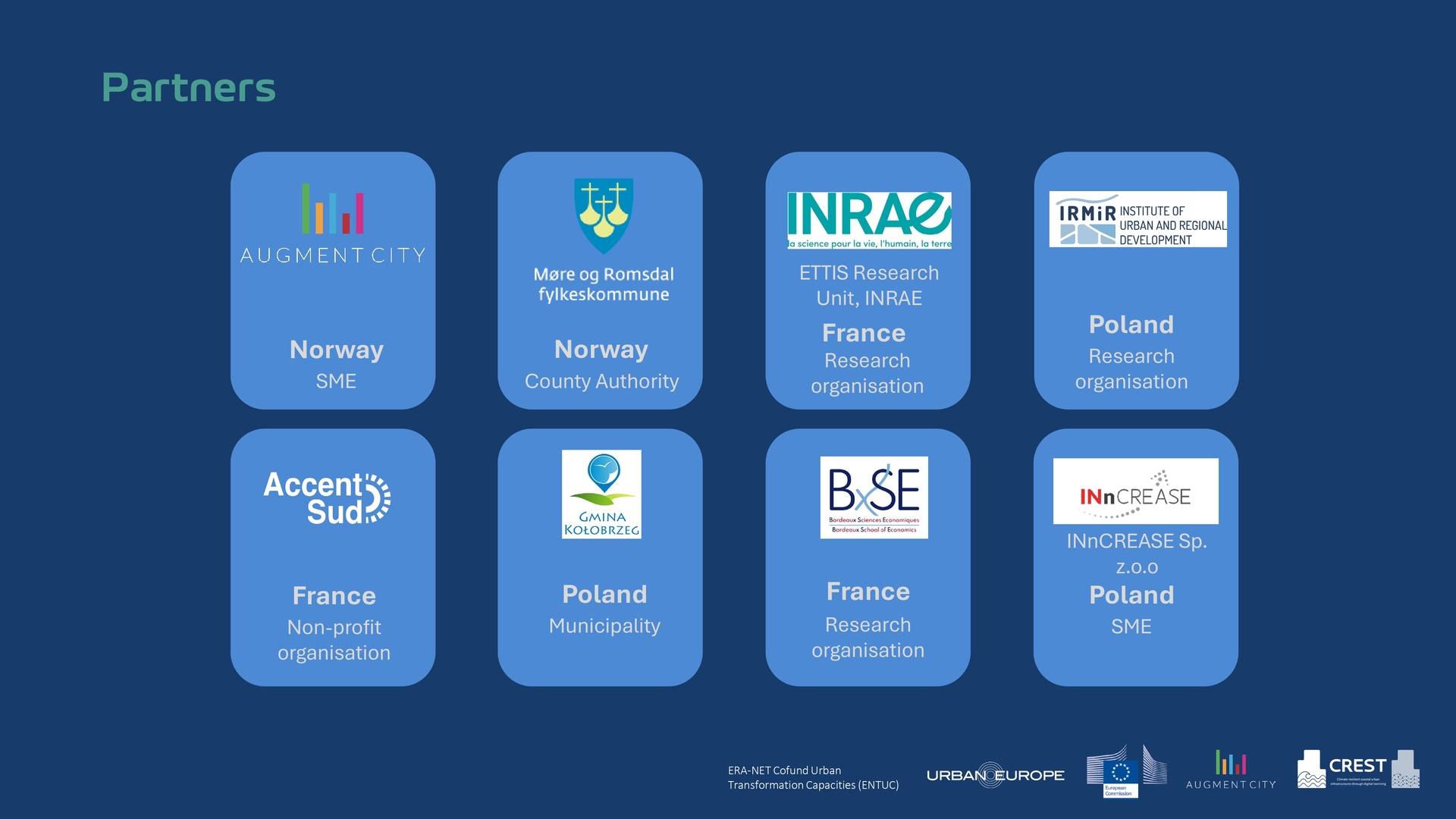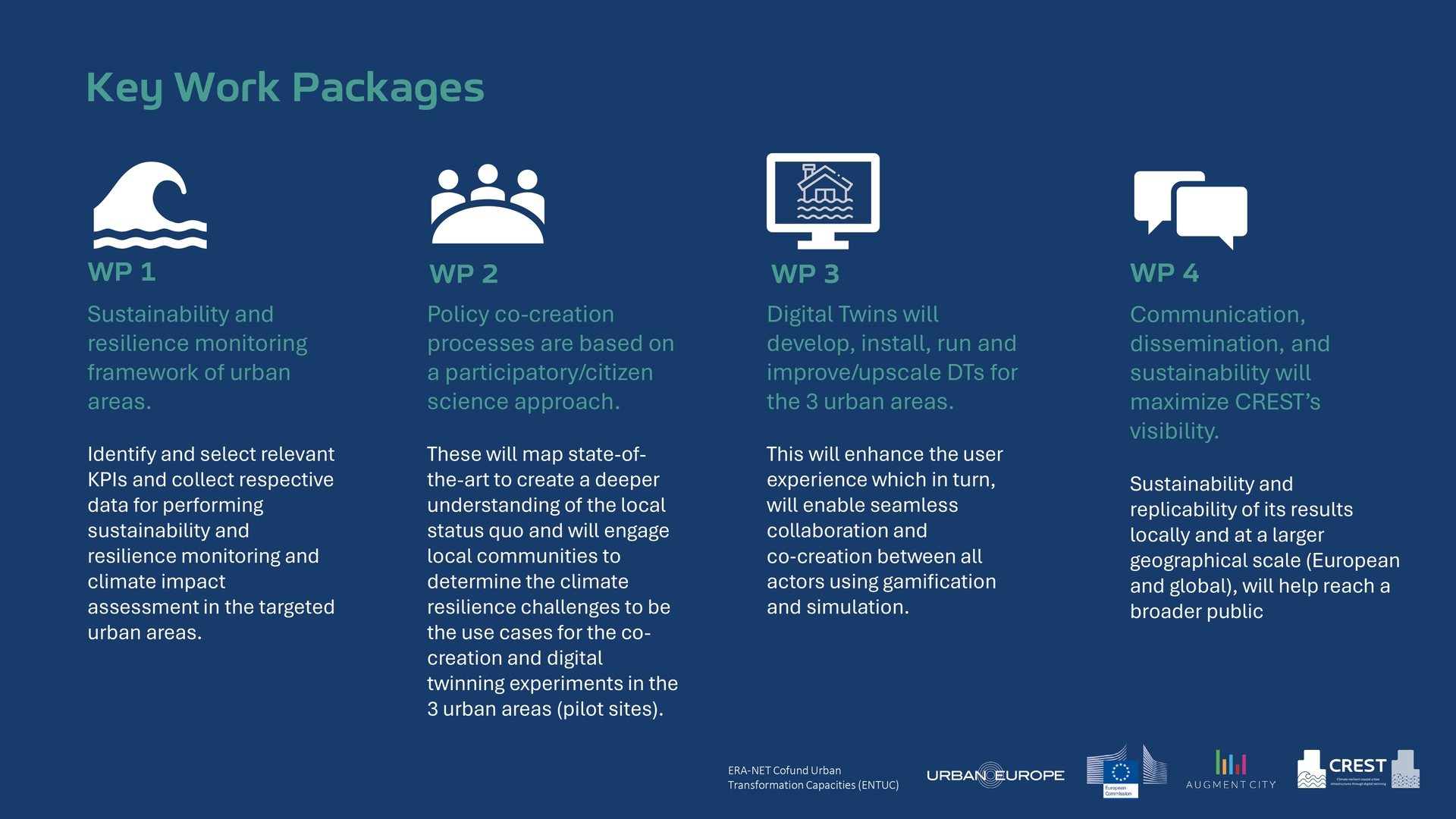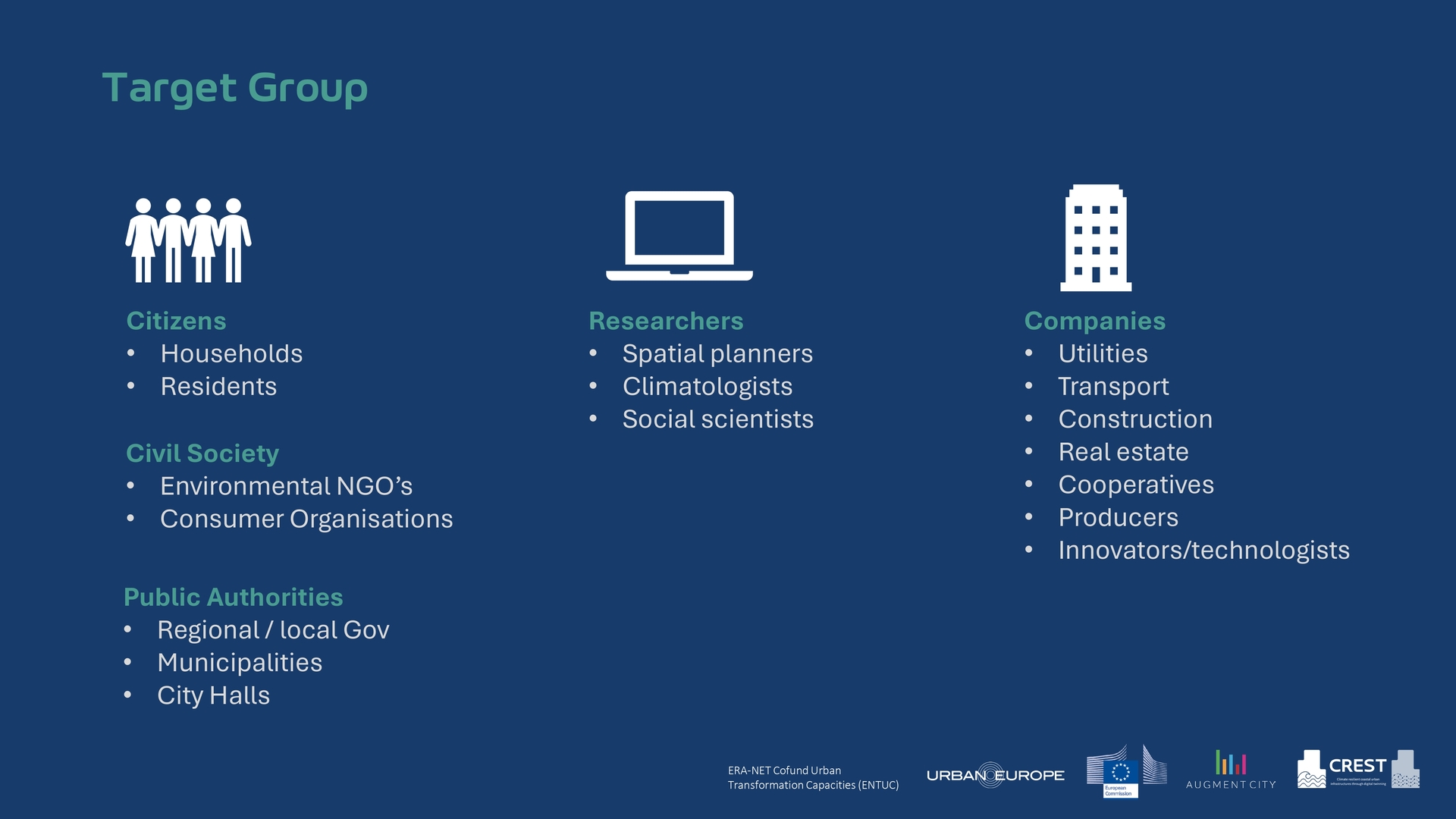CREST – Climate-Resilient Coastal Urban Infrastructures Through Digital Twinning, is a 3-year project started on 1st April 2022, run by a consortium of 9 partners from France, Poland and Norway, and co-financed by the ERA-NET Cofund Urban Transformation Capacities (ENTUC) of the JPI Urban Europe Programme of the European Commission (in France, under the Agence Nationale de la Recherche (ANR), the National Research Agency).
CREST goal is exploring a new methodology to empower vulnerable coastal urban areas to face the challenge of climate change adaptation through a groundbreaking initiative leveraging Augmented Reality (AR) built on AugmentCity Digital Twin technology and co-creation approaches.
By setting-up and rolling-out collaborative platforms though Digital Twinning and co-creation activities engaging local citizens and communities, based on citizen science and participatory methodologies, CREST wants to support and empower environmental decision-making and innovative policy practices, enabling robust and resilient responses to climate change.
Climate change largely impacts urban life. Extreme temperatures have an impact on sea level rise and, subsequently, nefarious events such as floods, droughts and storms have costly impacts on cities’ basic services, infrastructure, housing, livelihoods and health. Cities are responsible for 75% of CO2 emissions, and so its stakeholders must come forward with out of the box solutions to promote innovation and stimulate urban resilience by limiting negative impacts of climate change.
But for a problem to be addressed, it must first be seen and felt. Visualization is a potential way of increasing engagement with climate change, and IT developments, such as Artificial Intelligence and Augmented Reality, provide significant advancements that can be transformative in engaging audiences with climate change issues. This is at the basis of AugmentCity which developed an innovative way to operate Digital Twins (DT) of cities, enabling data and “what-if” scenarios to be analysed and visualized in an interactive and immersive visualisation tool to be used by policy-makers, researchers, companies and citizens. Our project builds on AugmentCity and apply it in terms of demonstration, co-creation and mobilization of stakeholders for capacity-building and collective decision-making in 3 European urban areas for resilient urban infrastructure adaptation to climate change.
Objective 1
Develop and implement a monitoring and impact assessment framework for sustainability and climate resilience
Objective 2
Create Graphical Digital Twins (DTs), an innovative engagement and decision support for urban transformation
Objective 3
Promote capacity building and co-creation for greater resilience of urban infrastructure
Objective 4
Develop pathways for the future uptake and replication of CREST results
Objective 5
Broad citizen and stakeholder engagement for greater resilience and adaptation to CC
METHODOLOGY
The CREST uses both applied and fundamental/basic R&I activities and proposes a new collaborative model between the local and regional stakeholders – administrations, business, academia and the wide civil society – to co-create adaptation solutions. Bringing all stakeholders together in this co-evolutionary process to accelerate this societal transformation is a cornerstone of this project. The target groups of CREST project are researchers, companies, citizens, civil society and public authorities.
From the very beginning of the project, one of the basic assumptions was to engage citizens in the research process through the use of modern technological solutions – creating digital twins of cities and urban areas. The main goal of using digital twins was to provide lay citizens with the ability to easily imagine the threats resulting from climate change to the places they live. Good visualization of problems allows for their better understanding and, consequently, greater acceptance for introducing changes, including infrastructural solutions that increase local resilience to climate change.
The project covered the following cities and regions:
CREST is structured in 5 Work Packages
WP1 – Sustainability and resilience monitoring framework of urban areas.
Led by ETTIS laboratory of INRAe and Bordeaux Business School of Economics: identity and select relevant KPIs and collect respective data for performing sustainability and resilience monitoring and climate impact assessment in the targeted urban areas.
WP2 – Policy co-creation processes based on participatory/citizen science approach.
Led by Institute of Urban and Regional Development: Map state-of-the-art to create a deeper understanding of the local status quo and engaging local communities to determine the climate resilience challenges to be the use cases for the co-creation and digital twinning experiments in the 3 urban areas (pilot sites).
WP3 – Digital Twins: develop, install, run and improve/upscale DTs for the 3 urban areas.
Led by AugmentCity: This will enhance the user experience which in turn, will enable seamless collaboration and co‐creation between all actors using gamification and simulation.
WP4 – Communication, dissemination, and sustainability.
Led by ACCENT SUD: Maximizing CREST ́visibility, sustainability and replicability of its results locally and at a larger geographical scale (European and global), will help reach a broader public.
WP5 – Project Management.
Lead by AugmentCity: will secure the effective coordination and management of CREST, including liaising with the European Commission and national funding agencies, communication between partners, and administrative, financial, and contractual
management, quality control and risk management, innovation and IPR management, data management, and data protection.



